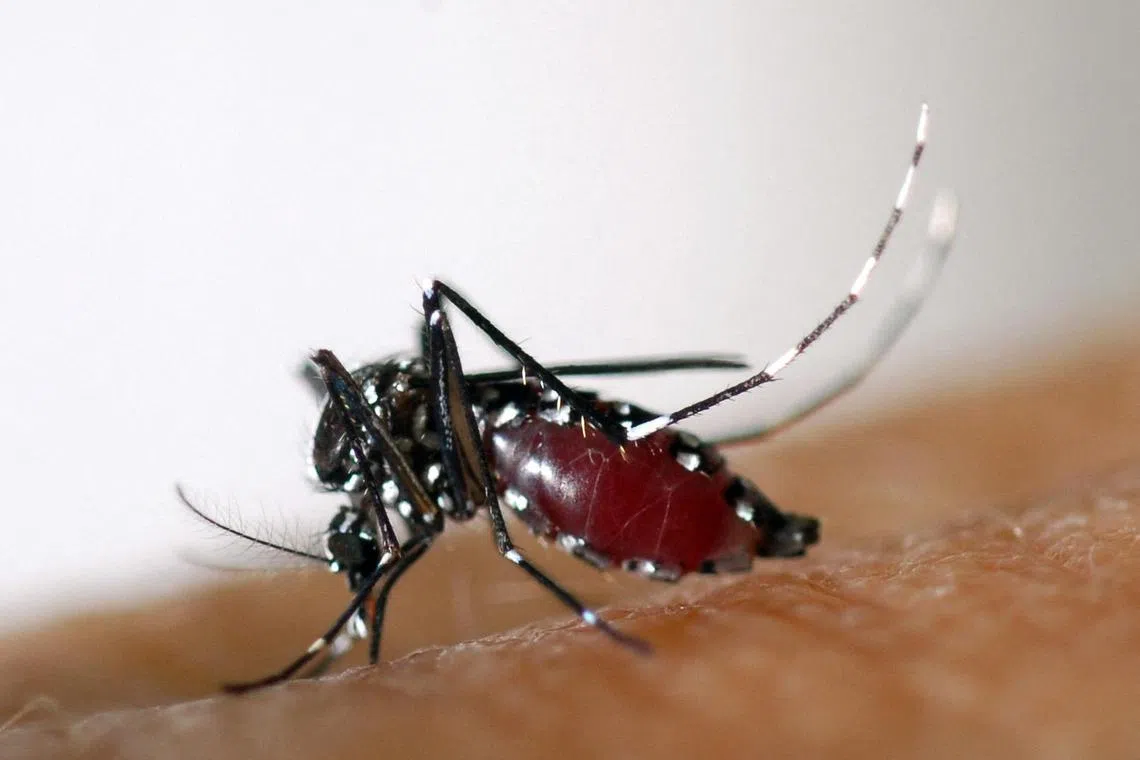WHO prepares for El Nino-linked spread of viral disease
Sign up now: Get ST's newsletters delivered to your inbox

Climate change is fuelling the breeding of mosquitoes, and incidence of dengue has already risen sharply in recent decades.
PHOTO: AFP
Follow topic:
GENEVA - The World Health Organisation (WHO) is preparing for an increased spread of viral diseases like dengue, Zika and chikungunya linked to the El Nino weather phenomenon,
El Nino, a warming of water surface temperatures in the eastern and central Pacific Ocean, has officially returned after three years of the La Nina climate pattern.
This is likely to yield extreme weather later in 2023, from tropical cyclones spinning towards vulnerable Pacific islands to heavy rainfall in South America, to drought in Australia and some parts of Asia.
“WHO is preparing for the very high probability that 2023 and 2024 will be marked by an El Nino event, which could increase transmission of dengue and other so-called arboviruses, such as Zika and chikungunya,” said Dr Tedros.
The WHO chief also warned that climate change is fuelling the breeding of mosquitoes, and incidence of dengue has already risen sharply in recent decades, particularly in the Americas.
Peru has declared a state of emergency in most regions in 2023, and its Health Minister Rosa Gutierrez last week resigned amid a surge in cases of dengue.
The disease is transmitted through the bites of Aedes aegypti mosquitoes, with symptoms that include fever, eye, head, muscle and joint pain, nausea, vomiting and fatigue. REUTERS

